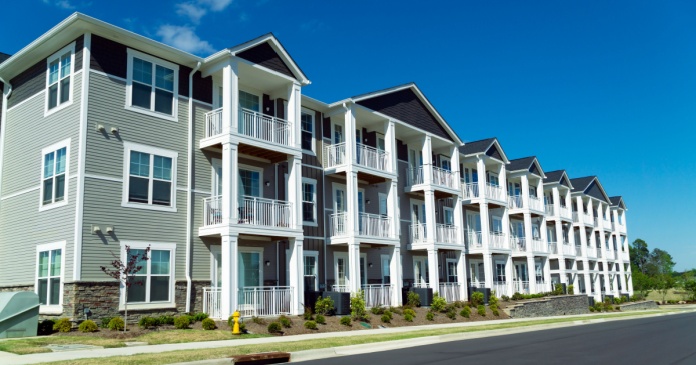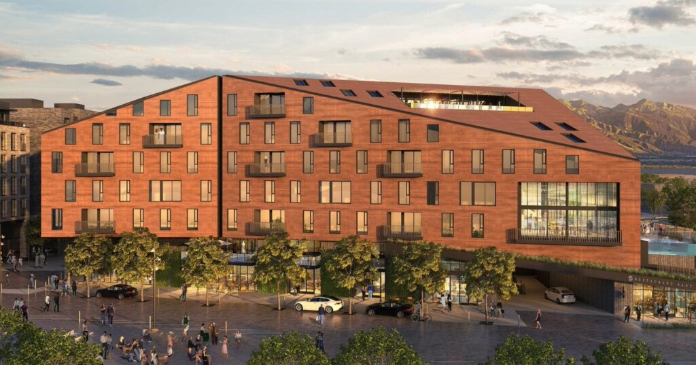Equity Residential, a REIT, recently bought 777 Sixth Avenue, a 32-story tower at Avenue of the Americas and 27th Street in Chelsea.
“We stepped up, swallowed hard and plunged in,” said Neithercut, whose Equity Residential is the country’s biggest publicly traded REIT. “We never expected there to be a lot of opportunities out there in the marketplace.”
Equity Residential, the top apartment buyer this year, according to the research firm Real Capital Analytics, joins a list of institutional, public and private investors that are plowing money into apartments at a time when the market for most commercial real estate is flat. In the third quarter, sales of apartment buildings jumped 63 percent over the previous quarter, to $8.5 billion, according to Real Capital Analytics. Sales this year through the third quarter now stand at $18.5 billion, nearly double the same period last year. By comparison, sales through the third quarter in 2006 were $659.6 billion.
A number of factors are behind the rise in multifamily-unit sales this year. Low interest rates, a lack of new construction and falling vacancy rates have swelled the ranks of buyers and, in some cases, incited bidding wars. And real estate investors are eager to spend cash reserves hoarded in the bust.
“Investors see this as a great opportunity to get their hands on assets of the highest quality,” said Hessam Nadji, the managing director of research and advisory services at Marcus & Millichap, a real estate services firm in Encino, Calif.
Competition is strong for the few properties that reach the market. Many owners are loath to sell unless they can reap a large profit. Class A properties, or properties in good locations, selling for more than $20 million in cities with little development and strong demand are the most wanted.
“It’s highly competitive today because we only have 10 percent of the inventory we had in 2006,” said Mark T. Alfieri, an executive vice president at Behringer Harvard, a private commercial real estate firm. While some real estate investors bought properties last year, the buying did not begin in earnest until after the first quarter. Even Equity Residential, which was sitting on $1 billion in cash at the start of last year, bought only two properties in 2009. Rental rates and occupancies had improved enough by the second quarter that many real estate investment trusts were able to raise enough money to return to the market.
In New York, Equity’s big recent purchases have included the 38-story River Tower at 420 East 54th Street, the 32-story 777 Sixth Avenue and the 26-story Longacre House at 305 West 50th Street.

Real estate companies with new multifamily investment funds that do not have any properties underwater or carrying heavy debt loads have moved the swiftest. Last year, Behringer Harvard became the year’s most active buyer after purchasing 14 apartment buildings, many in all-cash deals, for $765 million. This year the company, based outside Dallas, has already spent $740.6 million on multifamily properties.
CB Richard Ellis Investors, which started a multifamily arm two years ago, has spent almost $1 billion since April 2009 on apartment buildings in deals that are either all cash or combine low debt with cash.
“We may not be the highest bidder, but we have the highest probability of closing,” said Stephen Zaleski, the managing director of the Multihousing Group at CB Richard Ellis Investors in Boston. “We’re incredibly nimble and can close a deal in 30 days.”
Investors have grown more confident about the market and are paying higher prices for a promise of future growth. As prices have escalated, capitalization rates, or the initial return on a building, have dropped to 6.7 percent in the third quarter nationwide. (When capitalization rates fall, so do investors’ returns.) The rates had been as high as 7.1 percent in 2009. But in some big markets, cap rates, as they are called, have plunged to 4.5 to 5 percent. Since he started buying last year, Neithercut said, prices have risen 20 percent.
“I’d like to back up a truck and buy more back then,” Neithercut said.
While it may seem counter intuitive in a slow-growing economy, real estate investors are willing to accept lower yields on the prospect of higher rents to come. Many say they think cap rates have bottomed and will start to rise in the coming year as fewer new apartments come on the market and demand for apartments heats up.
The new multifamily properties that are opening now were started before the credit crunch, when renter demand was high and financing was easier to get. This year, 99,000 units are expected to open, 40,000 fewer than in 2009. Just 50,000 apartments are projected for next year. It will probably be the end of 2012 before a large number of new properties open.
A smaller inventory should help drive vacancy rates even lower. A drop in vacancies nationwide and an increase in rents have emboldened investors. In the third quarter, the national vacancy rate dropped to 7.1 percent from 7.8 percent, the real estate research firm Reis said, the lowest number since Reis started publishing quarterly figures in 1999.
While job growth has remained anemic—though the figures from October were encouraging—real estate experts and investors say more Americans who had moved in with friends and family are gaining confidence in their job prospects and are signing leases again. Buying a home is less a consideration than renting for many people because they have neither money nor confidence in their job prospects.
“People are more willing to take a risk and lease an apartment because they expect to find a job in the next six to nine months,” said Victor Calanog, the director of research for Reis in New York.
Author: Kristina Shevory, nytimes.com














